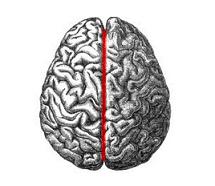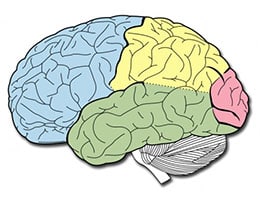 Coming from the Latin word scissūra , the idea of fissure allows us to refer to an opening or slit that is recorded in some structure. It may be a groove that occurs naturally or is caused by some type of injury or disease.
Coming from the Latin word scissūra , the idea of fissure allows us to refer to an opening or slit that is recorded in some structure. It may be a groove that occurs naturally or is caused by some type of injury or disease.
It is common for the concept of fissure to be used to name the folds found in the brain , cerebellum and medulla oblongata . The intercerebral fissure , also called the interhemispheric fissure , divides the brain into two hemispheres that are linked to each other by the corpus callosum .
These hemispheres, in turn, are divided into lobes by other fissures. Rolando's fissure , in this framework, allows us to distinguish between the frontal lobe and the parietal lobe. The Sylvian fissure , for its part, separates the temporal lobe from the parietal lobe and the frontal lobe. The calcarine fissure , Broca's fissure , superfrontal fissure , and simian fissure are other fissures present in the brain .
In the cerebellum there are the longitudinal fissure , the horizontal fissure , the posterolateral fissure and the adoccipital fissure , while in the medulla oblongata the posterior middle fissure can be recognized.
There are also fissures in other parts of the body beyond the head. Among them we can name the glottis fissure (in the throat), the corneal fissure (in the eye), the antitragohelicine fissure (in the ear) and many others.
Certain fissures are pathological and appear when certain disorders occur. This is the case of Harrison's groove , which is seen with advanced rickets , and Liebermeister's groove , produced by compression in the rib area, for example.
About the Sylvian fissure
 As evident a few paragraphs above, along with the Rolando fissure, the Silvio fissure is one of the most important in the brain of our species, and in fact it is also among the easiest to spot. It is located in the lower part of the two hemispheres, on the line known as the naso-lambdoid , and then runs transversely across almost the entire brain surface.
As evident a few paragraphs above, along with the Rolando fissure, the Silvio fissure is one of the most important in the brain of our species, and in fact it is also among the easiest to spot. It is located in the lower part of the two hemispheres, on the line known as the naso-lambdoid , and then runs transversely across almost the entire brain surface.
One of the reasons that makes this fissure one of the most relevant in our anatomy is the fact that it separates the parietal and temporal lobes, as well as the temporal and frontal lobes in their lower part. Furthermore, there is no deeper cleft in the human brain; so much so, that it houses at the bottom of its walls the insula , the so-called fifth cerebral lobe , and the transverse temporal gyrus , which is involved in the hearing process.
Some diseases have the characteristic that the Sylvian fissure does not form properly or is altered in some way. In Alzheimer's disease , for example, throughout its development it causes the cleft to widen, as a result of the degeneration suffered by the neuronal tissue. This is not exclusive to this disease, but can also be seen in other neurodegenerative diseases and in some dementias.
On the other hand, there is lissencephaly , an anomaly that occurs during neuronal development and is characterized by the smooth appearance of the brain, since it causes it to have few or no grooves, due to an extreme percentage of neuronal migration: already be its absence, a deficit or an excess of it.
Perisylvian syndrome causes certain motor problems or cases of paralysis in the face, and this is because development disorders occur in the parts of the brain that surround the Sylvian fissure.
